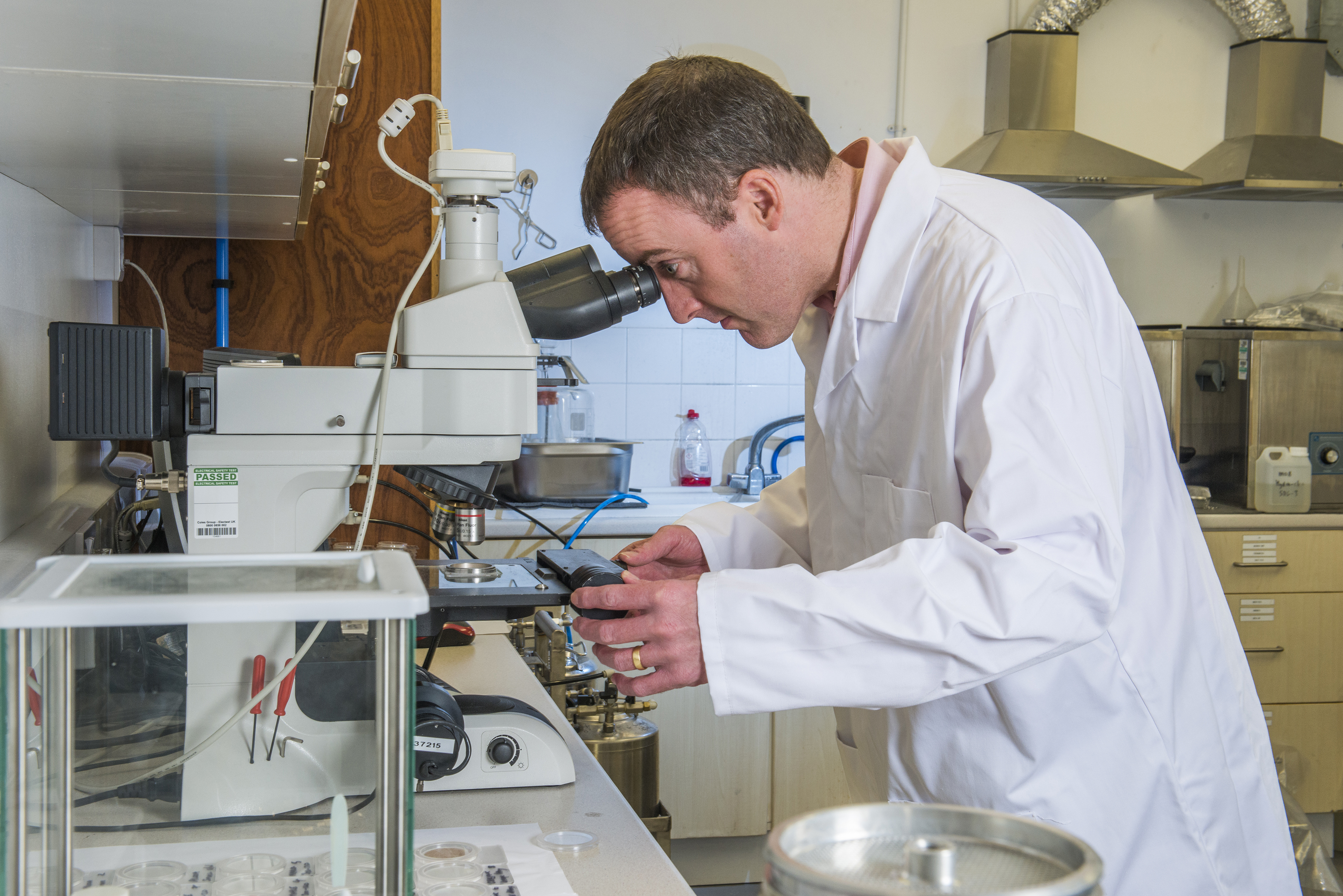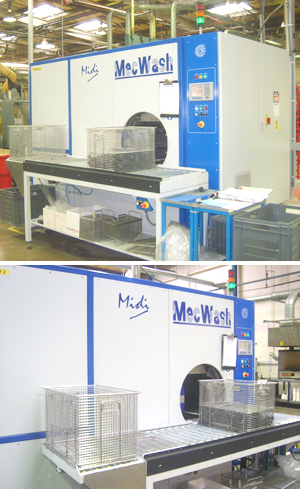When it comes to the cleaning of engineered components it’s often considered that the physical washing machine is the only important part of the process. Cleaning additives and detergents are merely a supporting element.
For MecWash, one of the leading innovators and manufacturers of aqueous parts cleaning systems, the approach has to be about three crucial elements: the technology, the chemistry and the product that is being cleaned.

“It’s quite easy for a company to go out and acquire a washing system without understanding the importance not only of the chemicals required, but the impact they can have on the substrate of the component being cleaned,” said John Pattison, managing director of MecWash based in Tewkesbury, Gloucestershire.
“It’s not just about knowing what contaminants have to be removed. The combination of an intense washing system with an inappropriate mix of chemicals and detergents could damage the substrate and lead to the cleaned component’s failure.”
MecWash has invested heavily in its own laboratory at its headquarters to develop, design and formulating chemicals for common and bespoke component cleaning applications.
So how does the process work?
MecWash works with a customer to understand the type of components being cleaned and what results are required. Analysis and trials then allows the correct wash process and chemistry to be defined.
The process begins with an audit of the customer’s cleaning requirements. This is thorough and covers key areas including:
- The substrate of the components being cleaned
- Are the components metallic, non-metallic or hybrid?
- What is the type of contamination?
- Do the components need to be brightened as well as cleaned?
- Are the components as cast, machined, polished or a combination?
- The geometry of the components and critical features
- What is the cleanliness specification?
- What is the process directly before the wash process?
- What is the process directly after the wash process?
- Does the component need to have any long-term corrosion protection after the wash process?
- What is the size and weight of the components?
Physical analysis is also undertaken. This includes:
- Chemical compatibility with substrate
- Removal of contamination from the component’s surface
- Removal of the contamination from the process solutions
- Millipore testing
- Gravimetric analysis
- Surface energy tests (eg water break)
- Visual inspection or bespoke tests.
“The process is intense and thorough. It has to be to ensure the complete system and process will remove the contaminants to the highest levels possible without damaging the components during or after the washing process,” said Mr Pattison.
“It could take days or months, depending on the type of product or process and the end results required by our client and their customers. Manufacturers in the aerospace, automotive, fluid power and medical sectors are ever more demanding.”

Adapting to a client’s needs
MecWash continues to work with a client long after a chemical solution has been identified.
“We have to work hand-in-hand with a client as their products can change, or the manufactured make-up of the product could alter,” added Mr Pattison.
“Our customers are dynamic in their approach to manufacturing and we have a flexible approach in order to continuously optimize their processes, even if the machine has been on site for several years.”
New processes and technology
Changing processes and new technology has seen the washing process change over the years. The design of the washing systems and the evolution of chemicals has increased the ability of such systems to remove contaminants to a fraction of what they were capable of 10 or 20 years ago.
Hellerman Tyton is one of MecWash’s customers who have benefited from the skilled work of the laboratory team.
The cable management solutions specialist now achieves high quality component cleaning, within strict temperature constraints.
The company uses a MecWash Midi wash system with an integrated Aqua-Save waste water recycling system at its production centre in Devon. The cleaning system has been configured to wash a temperature sensitive plastic component, while avoiding the risk of product shrinkage.
Lina Ficken, Engineer Team Leader, at Hellerman Tyton, said: “It’s important that, following the expansion process, mouldings are comprehensively cleaned before further handling and assembly processes, not least to remove a silicone coating used during the manufacturing process.
“Our customers apply the cable protection systems on site via the application of heat which shrinks them into position – temperature is clearly a factor that needs to be tightly controlled during manufacturing,” she adds.
“MecWash have been able to configure the cleaning system so that wash temperatures are held at no more than 40°C, which in conjunction with the tailored AC33 chemical solution that the company was able to develop for us, ensures that all material leaves the cleaning process in the optimum condition.”
John Pattison of MecWash added: “MecWash worked closely with the Hellerman Tyton team for many months, developing the AC33 chemical, which is formulated to clean the plastic components effectively at low temperatures.
“MecWash’s expertise in wash chemistry is based on years of designing tailored chemicals for the most testing wash challenges for individual customers, as well as manufacturing our own range of general wash chemicals and inhibitors.”
For more details about MecWash’s range of aqueous washing systems visit www.mecwash.com